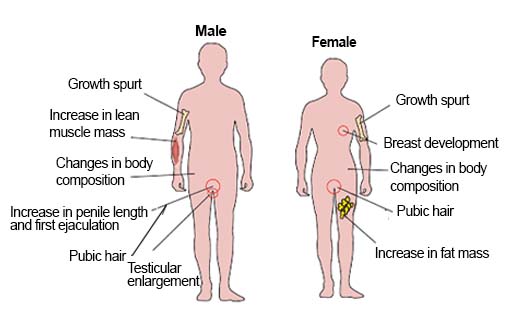1.2 Body changes
In adolescence, young people are going through significant physical changes brought on by puberty. They are growing taller, developing secondary sexual characteristics, and their bodies may well be changing in ways that they cannot recognise or that they actively dislike. They are becoming sexual, responding to members of the opposite sex in different ways, or becoming attracted to members of their own sex. The body is a primary site of identity and clearly these physical changes will have a great impact on who they are, on whether they see themselves as a child, on whether they understand themselves as sexual or sexually attractive, and on how they behave with this knowledge.
In girls, changes include breast development, menstrual periods, widening hips and growth of pubic hair. In boys, the testicles, scrotum and penis enlarge, facial and pubic hair grows, their voices deepen and they experience ‘wet dreams’ (Wiley and Corey, 2018). Changes in body composition during development mean that girls accumulate relatively more body fat while boys develop relatively greater muscle mass (Abreu and Kaiser, 2016). Figure 4 summarises the main features of puberty:
Activity 2: What body changes mean to young people
Spend a few minutes thinking about the implications of changes during puberty for young people. You might have vivid memories of your own experiences.
Discussion
You may have thought about young people becoming self-conscious about the visible changes. Girls might begin to experience harassment in public places (‘wolf whistles’ for example). Boys may feel peer pressure over penis size or their voice dropping. You might have memories of your first bra or your first facial shave (depending on your sex). There will be a whole range of implications, and they can be quite individual.

